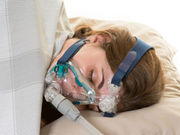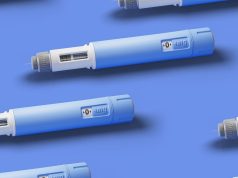Findings in patients with suboptimally controlled type 2 diabetes and obstructive sleep apnea
WEDNESDAY, March 9, 2016 (HealthDay News) — For patients with obstructive sleep apnea (OSA) and suboptimally controlled type 2 diabetes, use of continuous positive airway pressure (CPAP) for six months is associated with improved glycemic control and insulin resistance, according to a study published online Feb. 24 in the American Journal of Respiratory and Critical Care Medicine.
Elisabet Martínez-Cerón, from the Hospital Universitario La Paz in Madrid, and colleagues examined the effect of CPAP on glycated hemoglobin (HbA1c) levels in patients with suboptimally controlled type 2 diabetes and OSA. Fifty patients with type 2 diabetes and OSA were randomized to CPAP (26 participants) or no CPAP (control, 24 participants) in a six-month clinical trial; their usual diabetes medications remained unchanged.
The researchers found that the CPAP group achieved a greater decrease in HbA1c levels compared with the control group after six months. Compared with the control group, the CPAP group also had improved insulin resistance and sensitivity measures (in noninsulin users) and improved serum levels of interleukin (IL)-1β, IL-6, and adiponectin after six months. Mean nocturnal oxygen saturation and baseline IL-1β were independently related to six-month change in HbA1c levels in patients treated with CPAP (P = 0.002).
“Among patients with suboptimally controlled type 2 diabetes and OSA, CPAP treatment for six months, when compared to a control group, resulted in improved glycemic control and insulin resistance,” the authors write.
Full Text (subscription or payment may be required)
Copyright © 2016 HealthDay. All rights reserved.








